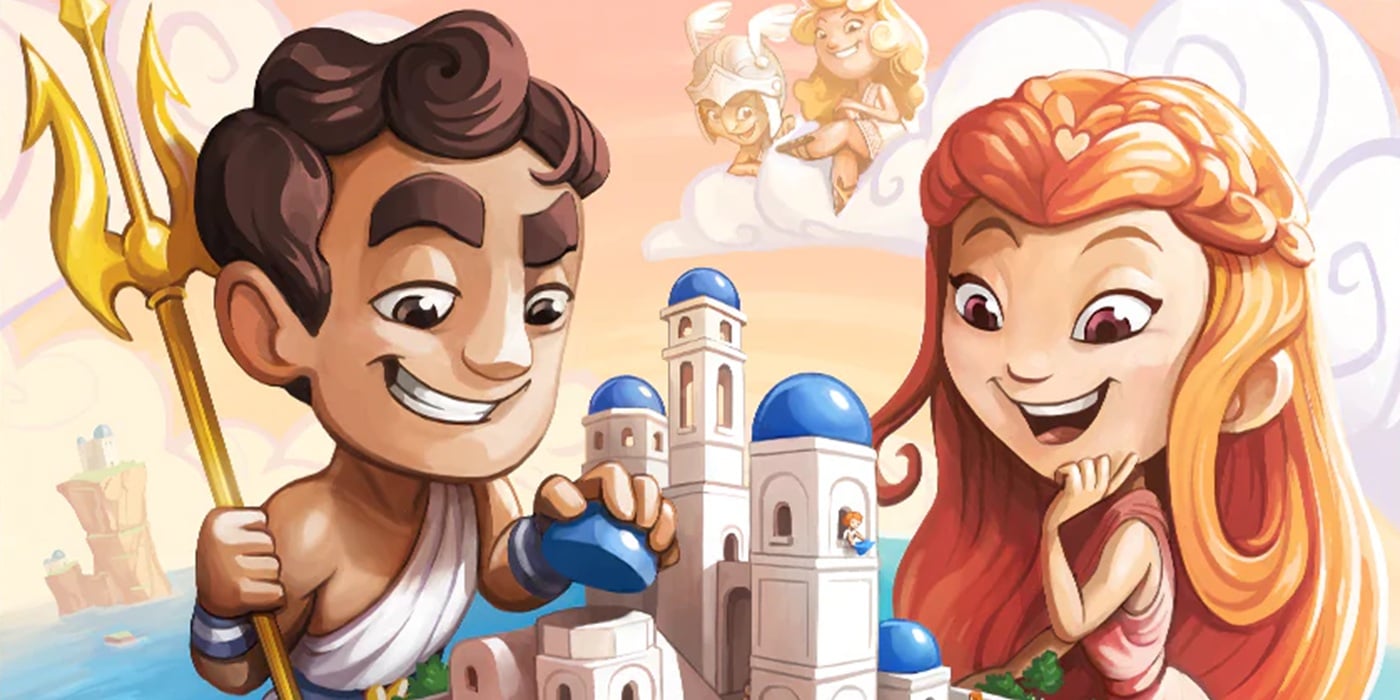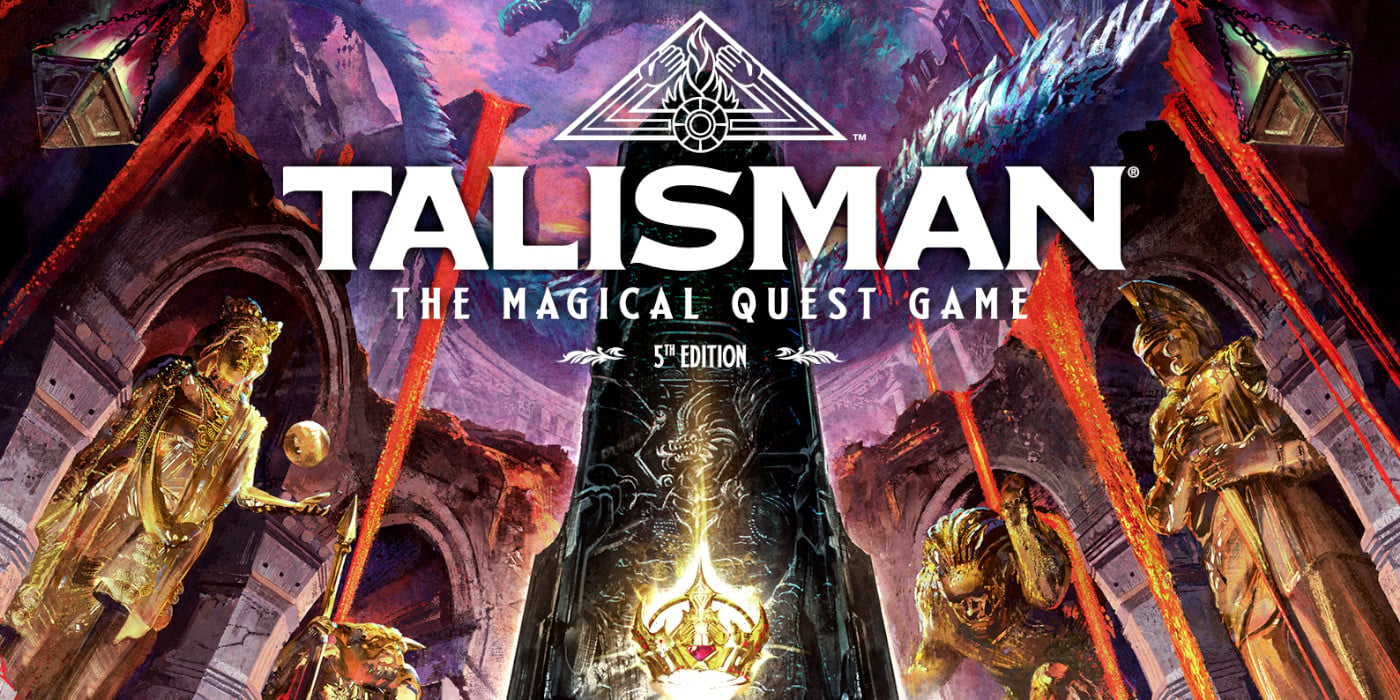Build Your City and Call Upon Your Pantheon in ‘Santorini’

Santorini lets you build up your beautiful Greek island. And if things get hard, use the powers of your gods to cheat… Just a little!
In Santorini, players build their own city, inspired by the real-life island of Santorini. But unlike other strategy city-building board games, this one incorporates a little Greek Mythology flair… And baked-in mechanics for bending or even breaking the rules when you’re in a tight spot.

Santorini
Even if you can’t travel to Santorini—and in this economy, who can?—you may at least be familiar with the very specific and idyllic architecture the Greek island is known for. And the board game of the same name looked at pictures like this one and said, “We’re going to make our own in miniature!”
Santorini is a strategy board game where players build up their island city in blocks, and each player has a Greek god card to be used when needed. It’s a board game that mixes a little mythology with the light architecture of building games with a bit of 3D puzzles and strategy games.
With thousands of ways to build up your city, and a number of different god cards to pull, Santorini is also a game with a lot of replayability. So collect your pantheon of mythology loving friends or gather your family for a game night, and build your own Santorini.

READ MORE: WE’RE BUILDING THE ULTIMATE SCIENCE FAIR MACHINE: GIZMOS EXPLAINED
History of the Game
Santorini was initially designed by Gordon Hamilton in 1985 and published as an all-wooden board game in 2004. In 2016 Roxley Games launched a republish campaign for the game on Kickstarter. The relaunch campaign was successful as the Kickstarter earned more than $700,000 from 7,100 unique backers, and by January 2017, Santorini was available for players to buy at retail.
While the original used wooden blocks and has more of an abstract look, the 2016 republish used a game board and design that looked much more like the island of Santorini. The updated game uses building blocks that look like buildings with windows and stairs, and of course domed pieces just like the beautiful blue domes that Santorini is famous for.
How to Play
Santorini is a game for two to four players with no solo mode.
To set up your game, players assemble the island. Then the first player—usually the youngest player—places two worker pieces on the board in any two unoccupied spaces. The other players do the same.
Players then take turns moving their worker and building around the board. One worker may move one space in any direction, including up or down if multiple levels are built. They can build by placing a block or dome on any space neighboring the worker’s location. Every turn a worker must be able to perform a move and a build action.

Of course, it can be easy to get stuck in Santorini. A worker may not be able to move, or there may be limited options for building. This is where the god powers come into play. Each player chooses their Greek god, and can use their power at a strategic time in the game. For example, Artemis allows a worker to move one additional time, while Hermes lets workers move any number of times (including zero) before their build action.
The game is won when a player builds and has one of their workers move up to the top of the third level of a building.
Award Nominations
Santorini was nominated for the following awards:
- 2016 Meeples Choice Award Nominee
- 2017 International Gamers Award – General Strategy: Two-players Nominee
- 2018 SXSW Tabletop Game of the Year Nominee
- 2018 Spiel des Jahres Recommended
- 2018 Origins Awards Best Board Game Nominee
- 2018 Årets Spill Best Family Game Nominee
- 2020 MinD-Spielepreis 2 Players Game Nominee
- 2021 MinD-Spielepreis 2 Players Game Nominee
How Many Gods Are There to Pick From?
There are fifty-one powered figures to use for a boost, depending on the game variant you’re playing.
The standard god cards you can pick from are Apollo, Artemis, Athena, Atlas, Demeter, Hephaestus, Hermes, the Minotaur, Pan, and Prometheus. These all have relatively simple powers and are good for younger or more inexperienced players.
Then the advanced gods include, Aphrodite, Ares, Bia, Chaos, Charon, Chronus, Circe, Dionysus, Eros Hera, Hestia, Hypnus, Limus, Medusa, Morpheus, Persephone, Poseidon, Selene, Triton, and Zeus.
The Golden Fleece Edition of Santorini includes a different pantheon as well as banned matchups between gods. This edition includes Aeolus, Charybdis, Clio, Europa and Talus, Gaea, Graeae, Hades, Harpies, Hecate, Moerae, Nemesis, Siren, Tartarus, Terpsichore, and Urania.
Golden Fleece also includes a series of hero cards including Achilles, Adonis, Atalanta, Bellerophon, Heracles, Jason, Medea, Odysseus, Polyphemus, and Theseus.
The Pantheon Edition and Riddle of the Sphinx edition are currently available for pre-order on Backerkit. So there may be even more additions to the list a well as rules updates on their way.
Some of Those Aren’t Gods… or Heroes!
Hey, mythology nerd. This game is probably for you.
Is Santorini Appropriate For Kids and How Long Does the Game Take?
Games tend to be pretty quick, and last about twenty minutes on average. And Santorini is both very appropriate and playable for a younger audience. It manages to be a fun game and family-friendly without making itself too juvenile.
In fact, I’ve seen many people online talk about using it for game nights with their kids, though six or seven is the youngest most people recommend because of the strategic aspect.
Happy adventuring!







